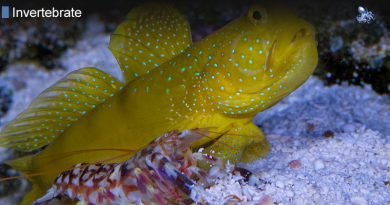Mantis Shrimp
The Astonishing World of the Mantis Shrimp
The mantis shrimp, scientifically known as Stomatopoda, is a marine crustacean that captures the fascination of both scientists and marine enthusiasts. Known for its vibrant colors and powerful claws, the mantis shrimp is a creature of many wonders. This article delves into the intriguing life of the mantis shrimp, exploring its unique features, hunting techniques, and the fascinating biology behind this extraordinary animal.
Introduction
The mantis shrimp is not your average marine creature. Found in tropical and subtropical waters, these vibrant crustaceans are known for their incredible speed, powerful claws, and striking colors. With over 450 species, mantis shrimp are divided into two main types: smashers and spearers, each named for their distinct predatory strategies. Their complex visual system and formidable hunting abilities make them a subject of intense scientific study and popular interest. In this article, we will explore the mantis shrimp’s physical characteristics, its predatory techniques, and the biological marvels that set it apart from other marine life.
The Anatomy of a Mantis Shrimp
Extraordinary Eyes
The mantis shrimp’s eyes are among the most complex in the animal kingdom. Each eye operates independently, providing a trinocular vision that allows for depth perception. These eyes contain up to 16 photoreceptor types, compared to the human eye’s three, enabling them to detect a wide range of colors, including ultraviolet light. This unique visual system is not just for show; it plays a crucial role in their hunting and communication.
Powerful Claws
Mantis shrimp are perhaps best known for their powerful claws, which they use with astonishing speed and force. The claws of the “smasher” mantis shrimp can accelerate as fast as a bullet, delivering a blow that can break glass and dismember prey. These claws strike with such speed that they generate cavitation bubbles, which produce shockwaves upon collapsing, adding to the destructive power of their punch. The “spearer” mantis shrimp, on the other hand, have claws designed like barbed spears to impale and capture soft-bodied prey.
Hunting Techniques of the Mantis Shrimp
Ambush Predators
Mantis shrimp are adept ambush predators. They often lie in wait within their burrows, using their incredible vision to detect prey from a distance. When the moment is right, they strike with lightning speed, using their claws to deliver a fatal blow or impale their target. This method of hunting is highly effective and allows the mantis shrimp to capture prey that other predators might miss.
Complex Communication
Communication among mantis shrimp is equally fascinating. They use a combination of visual signals and body movements to communicate with each other, especially during mating rituals and territorial disputes. Their vibrant colors play a significant role in these interactions, with different species displaying various patterns and hues to convey messages. Additionally, some mantis shrimp can produce low-frequency sounds to communicate, adding another layer of complexity to their behavior.
Biological Marvels of the Mantis Shrimp
Regenerative Abilities
One of the lesser-known but equally impressive features of the mantis shrimp is its ability to regenerate lost limbs. This regenerative capability is not only vital for their survival in the wild, where injuries are common, but it also offers valuable insights into the field of regenerative medicine. Scientists study these mechanisms in hopes of understanding and potentially applying similar processes to human medicine.
Heat Resistance
The mantis shrimp’s ability to strike with such force generates immense heat, yet their claws do not get damaged. Researchers have discovered that their exoskeleton contains a unique structure that dissipates heat efficiently, preventing damage from the extreme temperatures generated during their powerful strikes. This discovery has potential applications in developing heat-resistant materials and improving our understanding of biomechanical processes.
FAQs About Mantis Shrimp
What makes the mantis shrimp’s vision unique?
The mantis shrimp’s eyes contain up to 16 photoreceptor types, allowing them to see a broad spectrum of colors, including ultraviolet light. This complex visual system provides trinocular vision, enabling them to perceive depth and detect prey with remarkable accuracy.
How powerful is a mantis shrimp’s punch?
A mantis shrimp’s punch is incredibly powerful, with some species’ claws accelerating as fast as a bullet. This rapid strike can generate cavitation bubbles, creating shockwaves that add to the destructive force, capable of breaking glass and dismembering prey.
What are the main types of mantis shrimp?
There are two main types of mantis shrimp: smashers and spearers. Smashers have club-like claws used for delivering powerful blows, while spearers have sharp, barbed claws designed for impaling and capturing soft-bodied prey.
How do mantis shrimp communicate?
Mantis shrimp communicate using a combination of visual signals, body movements, and low-frequency sounds. Their vibrant colors and complex patterns play a significant role in their interactions, especially during mating rituals and territorial disputes.
Can mantis shrimp regenerate lost limbs?
Yes, mantis shrimp have the remarkable ability to regenerate lost limbs. This regenerative capacity is crucial for their survival in the wild and offers valuable insights for scientific research in regenerative medicine.
In conclusion, the mantis shrimp is a marvel of marine biology, with its extraordinary eyes, powerful claws, and complex behaviors. The mantis shrimp’s unique characteristics make it a fascinating subject of study and a remarkable example of nature’s ingenuity.




